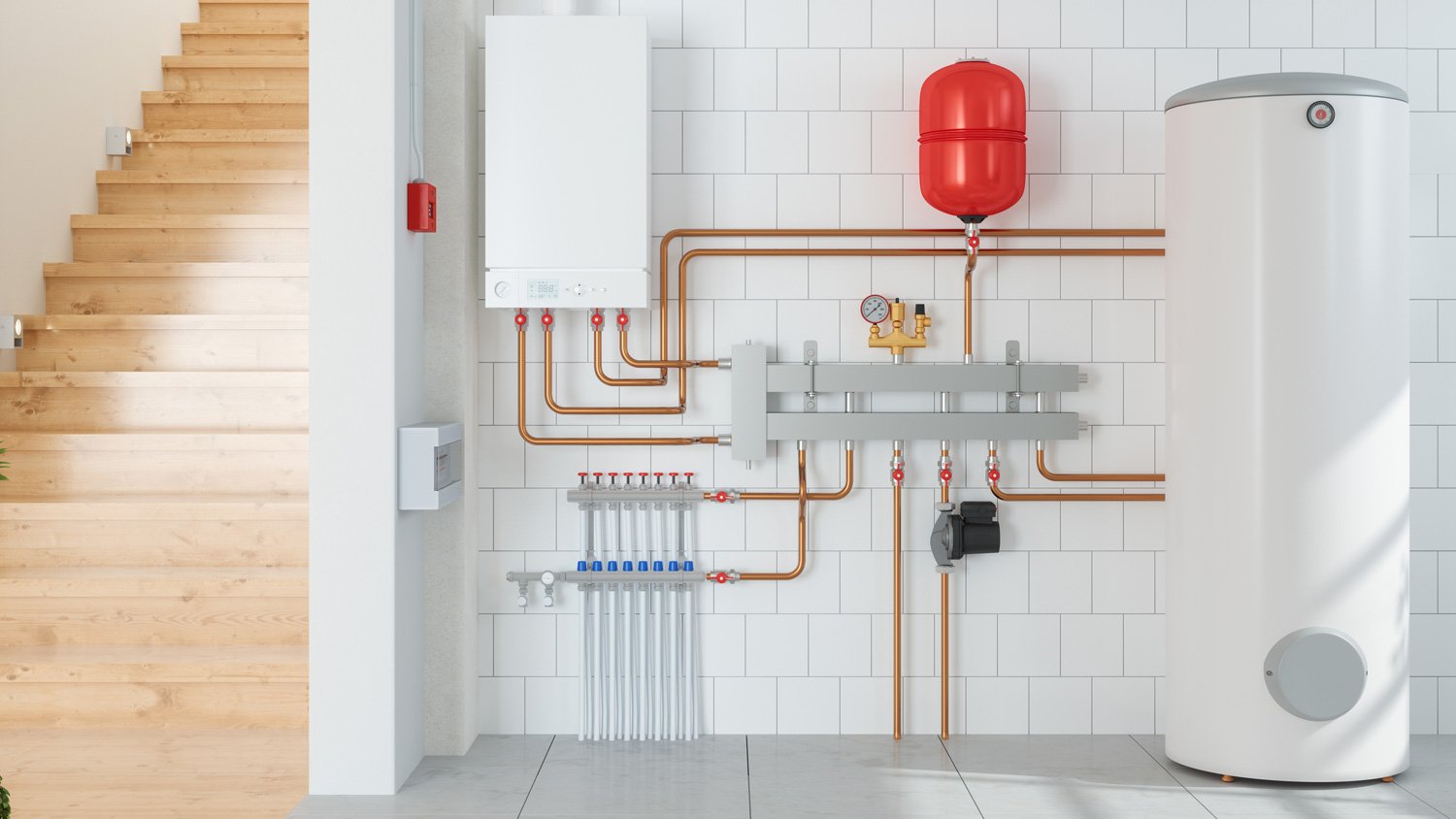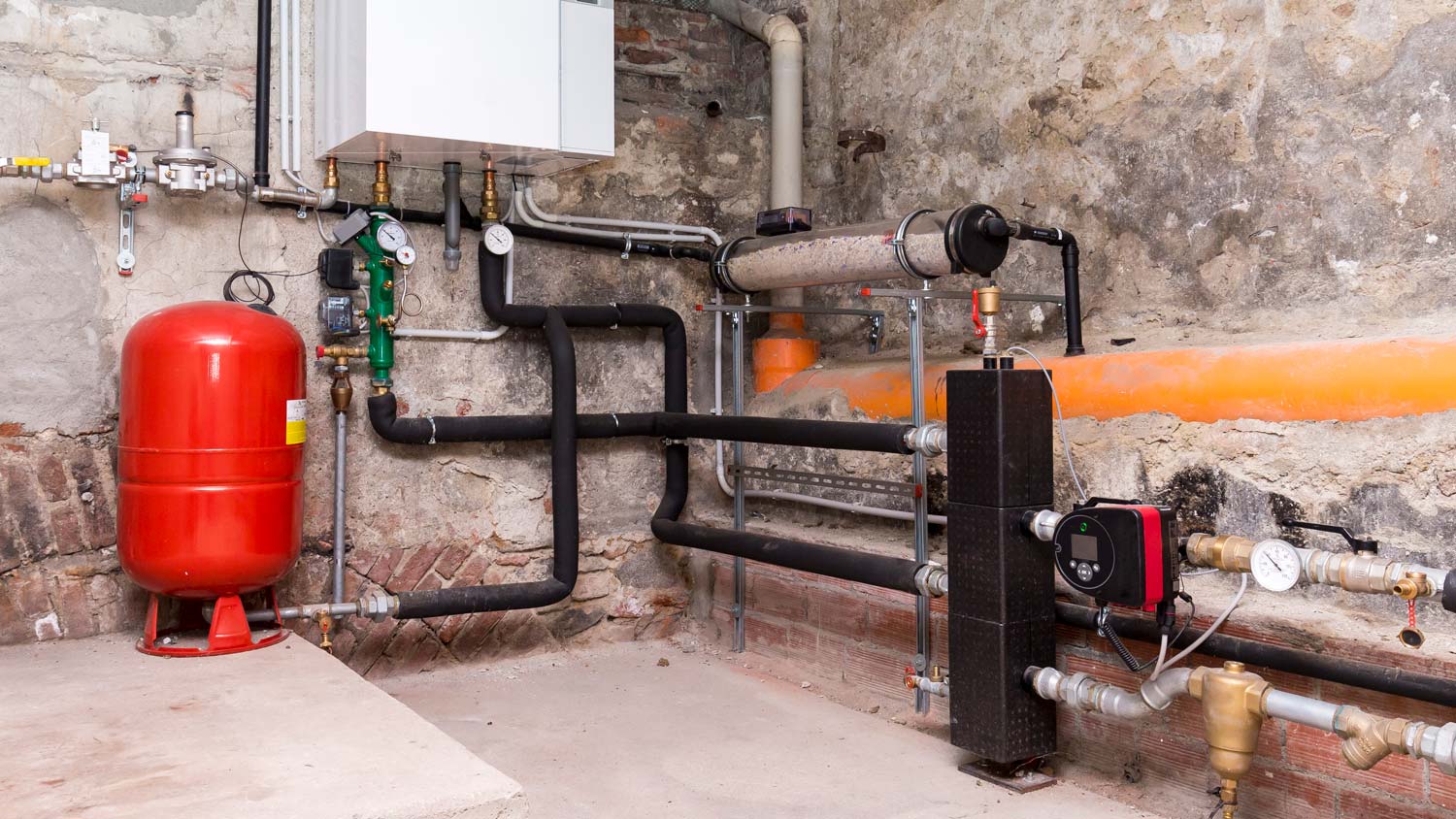What Is a Water Heater Expansion Tank?
Take the pressure off


A water heater expansion tank relieves pressure as water heats up.
Certain types of water heaters must have an expansion tank installed.
The expansion tank requires maintenance to keep it at its best.
A water heater expansion tank costs $150 to $450.
When water heats up, it expands. That's all well and good when there's plenty of space for the water to go. But when it's in an enclosed tank, such as a water heater, things can get messy and dangerous quickly. This is where a water heater expansion tank comes in. But what is a water heater expansion tank, exactly? This device is designed to relieve pressure and give that excess water somewhere to go.
What Is a Water Heater Expansion Tank?
A water heater expansion tank is a small container attached to the cold water supply pipe that connects to your water heater. Sometimes called a thermal expansion tank, it takes in excess water from the tank, helping to relieve pressure and prevent catastrophes.
Water heaters used to be closed systems, with all the water stored in a single tank. Pressure buildup in the tank could lead to leaks or, in extreme cases, cause the tank to blow. Water heater expansion tanks are safety features that provide a secondary space for the water to flow into, reducing the strain on your water heater and keeping your system from becoming damaged. An expansion tank costs $150 to $450 on average.
How Does a Water Heater Expansion Tank Work?
Expansion tanks consist of two chambers. One is full of air while the other is meant to contain water. As pressure builds up in the water heater, water flows into the expansion tank, compressing the air in one chamber and filling up the other.
The air chamber acts as a cushion, helping to maintain the water heater's pressure at a safe level. As the pressure in the water heater's main tank decreases, water flows back into it from the expansion tank.
Do I Need a Water Heater Expansion Tank?
Whether you need an expansion tank or not depends on the type of water heater you have installed. If you have a tankless system, no expansion tank is needed, as your water heats on demand.
However, if you have a tanked water heater, then an expansion tank may be necessary. In many areas, building codes require the addition of an expansion tank on certain types of water heaters, such as those in a closed loop system and without additional forms of thermal protection.
If you're not sure whether a water heater expansion tank is right for your system, a local water heater installation professional can help you decide.
How Do I Inspect and Maintain a Water Heater Expansion Tank?

Regular maintenance will keep your expansion tank in good form and help prevent problems ranging from corrosion to leaking. Check the tank's pressure gauge regularly to ensure that there is adequate pressure in the air chamber.
You can also test the air valve on the tank. Pressure on the valve. If the tank is working as it should, air will come out. If water comes out of the valve, that's a sign of a problem with the bladder inside the tank.
How Long Does a Water Heater Expansion Tank Last?
With proper maintenance, an expansion tank can last up to 10 years. Even if you've taken the best care of your tank, it's still a good idea to replace it when it reaches that age.
Another option is to replace your water heater with a model that doesn't require an expansion tank.















